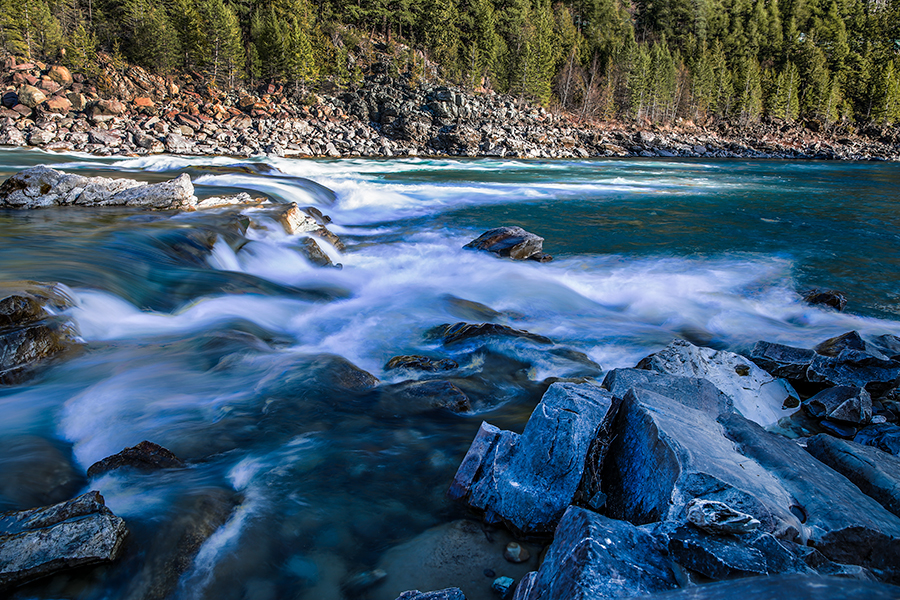A new survey from the University of Montana revealed wide, bipartisan support for the state’s wild places, with voters characterizing public lands, outdoor businesses and related policy issues as more critical than ever to the state’s economy and quality of life, even as a public health crisis dominates the national stage.
The 2020 Voter Survey on Public Lands was commissioned by UM’s Crown of the Continent and Greater Yellowstone Initiative (COCGYI). The biannual survey is designed to understand what voters think about public land issues, and its engineers have tracked public opinion since 2014.
University of Montana COCGYI Director Rick Graetz said this year’s results are unique because voters were surveyed in late-March, after Montana confirmed its first cases of COVID-19 and as awareness of the outbreak and its impacts to daily life grew.
Still, support for public lands was prominent, growing in some areas surveyed compared to years past.
“COVID-19 was front and center in the news when we surveyed, so I was surprised to see support for public lands and conservation issues remain steady and even grow in some cases,” Graetz said. “I think it shows Montanans view our public lands and outdoors as a refuge, especially in times of national crisis, and they especially acknowledge the value of outdoor businesses when the economy is suffering.”
In 2014, 2016 and 2018, the UM initiative sponsored a survey of Montana voters, finding overwhelming support for and understanding of the value of the state’s open spaces and the access afforded them.
“We do this every other year to get a clear picture of where Montanans stand on a variety of proposals and policies regarding the management of our shared public lands,” Graetz said.
As in past years, the 2020 poll was conducted by Republican pollster Lori Weigel of New Bridge Strategy and Democratic pollster Dave Metz of Fairbank, Maslin, Maullin, Metz & Associates.
The bipartisan team of pollsters said the big takeaway in 2020 is more voters than ever consider public lands to be a boost for Montana’s economy, a point that has been repeatedly underscored in economic studies, including a new report late last year by the U.S. Bureau of Economic Analysis.
That report listed the Treasure State as a top contributor to the nation’s gross domestic product in revenue generated by outdoor activities, which accounted for $427.2 billion of the country’s national gross domestic product (GDP) in 2017.
For its part, Montana ranked at the top for its size, placing second only to Hawaii with 5.1 percent of its GDP linked to the growing outdoor recreation economy, much of which takes place on its vast swaths of public land.
Weigel said these and other studies, as well as a growing consensus that Montana’s public lands serve as an economic boon, likely led to a greater acknowledgment of the economic contribution of public lands, which grew by 7% since it was last asked on the 2018 survey.
It’s part of a longer-term trend, she said.
“If you look at all the issues we have tracked since 2014, the perception that public lands help Montana’s economy has seen the biggest bump over the years,” Weigel said. “The trend has played out in other western states, but it’s particularly pronounced in Montana.”
The pollsters also said this awareness translates into support for related state policy. For example, 86% of voters say they are in favor of Montana’s Office of Outdoor Recreation work to support the outdoor recreation economy.
As in past years, the survey also found cross-party support for a variety of policy debates and public land proposals that would require congressional approval.
These include:
• 75% of voters want to increase or maintain protections for the seven national forest Wilderness Study Areas in Montana.
• 77% of voters support a proposal to protect one such Wilderness Study Area in the Gallatin Range near Yellowstone National Park.
• 75% of voters support the Blackfoot Clearwater Stewardship Act to expand protections on public lands adjacent to the Bob Marshall Wilderness, similar to past survey years.
• 79% of voters support stronger protections for the Badger-Two Medicine area near Glacier National Park and support designating it as a Cultural Heritage Area.
• 79% of voters support the proposed Montana Headwaters Legacy Act to expand the number of federally protected rivers in southwestern and central Montana.
When it comes to enacting these proposals into law, two-thirds of voters say they want Congress to act within one year of receiving a proposal developed through a public process with community input, according to the results.
Graetz said that’s not necessarily the case in practice, which he hopes strikes a chord with the state’s delegation.
“Montanans like to get things done, and they are in favor of politicians acting quickly once everyone has said their piece,” he said. “There is a real discrepancy between how quickly voters want Congress to act and how quickly they move on these proposals in reality.”
A summary of the results and the full survey is available for download at https://crown-yellowstone.umt.edu/voter-surveys/default.php
The 2020 Public Lands Survey polled 500 voters by landline and cellphone between March 19-24th, with a margin of error of +/- 4.38 percent.
